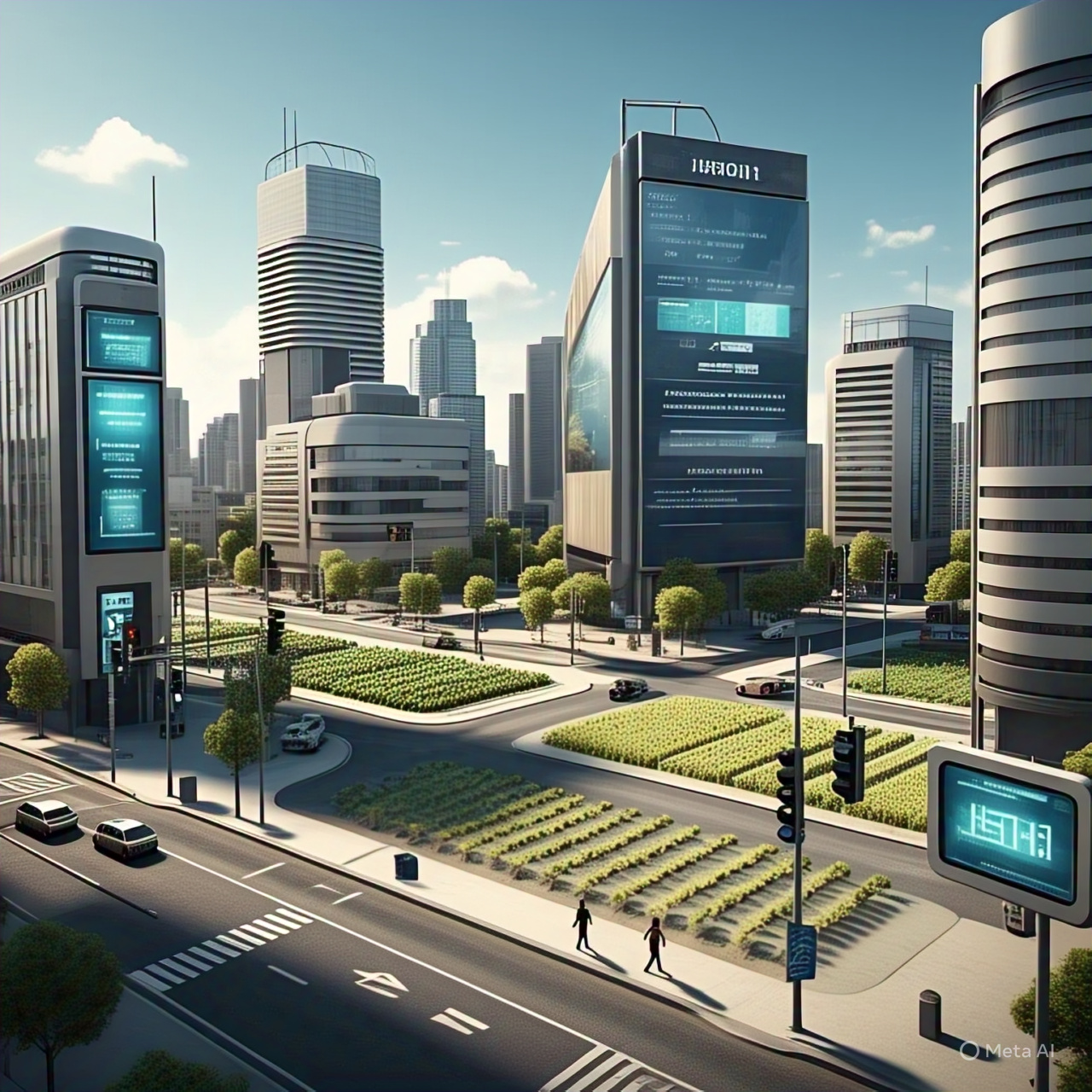Thanks to the IoT Application Development, which allows devices to connect with one another and enhance our lives, the digital world has been transformed. At its core, this revolution is centered on the development of Internet of Things applications, which is the process of creating software solutions that allow linked objects to work intelligently.
What is the Internet of Things Application Development?
Internet of Things (IoT) application development refers to the process of planning, designing, developing, and deploying applications that allow IoT devices to collect data, communicate, and perform automated activities.
-
These programs connect hardware (devices, sensors, actuators) with software (cloud computing, analytics, dashboards).
-
Smart thermostats, networked vehicles, industrial monitoring systems, and wearable health trackers are just a few examples.
-
To manage data in real-time and link devices, developers use APIs, software development kits, and cloud services.
Important Components of IoT Applications
-
Sensors and Devices: Collect data on variables such as motion, temperature, and humidity as they occur in real time.
-
Modules for Connectivity: 5G, LoRaWAN, ZigBee, Bluetooth, and Wi-Fi are common technologies.
-
A Gateway: A device that connects adjacent devices to the cloud via the Internet of Things.
-
Cloud Architecture: Utilizing cloud architecture, data is handled and stored remotely.
-
User Interface: A dashboard or an app that allows a user to control and monitor various devices.
Criteria for Effective Internet of Things Use Cases
-
Collecting and displaying data as it happens
-
AI and ML powered smart analytics
-
Interoperability of electronic devices
-
Administration of an electronic gadget located at a distance
-
Reactions and alerts sent automatically
-
Expandability to support tens of thousands of devices
Implications for Healthcare
-
Smartwatches and other wearable gadgets for remote patient monitoring
-
Early warning systems for falls
-
Monitoring of blood sugar and heart rate with mobile apps
-
The expansion of IoT applications has improved healthcare accessibility, especially for rural residents and the elderly.
Industrial Internet of Things (IIoT)
-
The IIoT allows for the monitoring of equipment health and the prediction of potential faults.
-
Monitoring the facility’s environmental conditions is essential.
-
Enhance worker safety by using sensors and wearable technology.
-
Reduce power consumption and idle time.
-
Improvements in operational efficiency are being brought about by the development of IoT applications in the vital IIoT industry.
Smart Home IoT Application Development
-
Integration applications for smart home features such as door locks, security cameras, HVAC, and lighting
-
Voice-activated assistants for device control, such as Alexa and Google Assistant
-
Controlling the temperature or opening the door are only a few examples of the uses for geofencing
-
Robots that operate according to a predetermined plan (for instance, turning out the lights while in the bedroom)
Applications in Transportation and Automobiles
-
Using Global Positioning System and Internet of Things sensors to monitor fleets
-
Keeping an eye out for indicators of driving fatigue
-
Notifications about predictive maintenance
-
Smartphone apps for intelligent parking solutions
-
Vehicles equipped with network connection that can exchange data with existing systems to provide real-time navigation
The Internet of Things (IoT) with Mobile Apps
-
Smartphone apps are crucial for controlling Internet of Things devices
-
Offer control from a distance, continuous status updates, and push notifications
-
A lightweight and safe option is required
-
It is vital that it works on both iOS and Android
-
The smooth synchronization of apps and devices is guaranteed by well-developed IoT applications
What Role Does Machine Learning and AI Play?
-
In order to identify patterns, AI sifts through mountains of sensor data
-
Predicting human actions, energy use, and equipment breakdowns is the domain of machine learning algorithms
-
Medically used for the purpose of detecting abnormalities in the vital signs of patients
-
Artificial intelligence apps can make predictions about what you may like
Problems with Privacy and Security
-
Data such as location, behaviors, and health records are handled by IoT apps
-
Interception of data, viruses, and unauthorized access are common threats
-
Authentication and encryption using tokens, as well as regular firmware changes, are necessities for developers
-
Some uses need adherence to regulations like GDPR and HIPAA
Trends in the IoT Market for Future Growth
-
Forecasts indicate that the worldwide IoT market would exceed $1.5 trillion by 2030
-
Markets like healthcare, smart cities, and adoption rates
-
The need for edge computing in IoT networks is on the rise
-
A growing number of developers are opting to use cloud-native programming and microservices
Frameworks and Tools for Development
-
Some examples of IoT platforms include AWS IoT, Azure IoT Hub, and Google Cloud IoT
-
Python, JavaScript, C, and C++ are languages that are used for programming
-
Applications programming interfaces (APIs) and software development kits (SDKs): MQTT, HTTP/REST, and CoAP
-
Helps manage connections between devices and the cloud; this is known as middleware
-
In order to effectively create IoT applications, it is crucial to use the right toolset
Smart Cities with Real-Time Data
-
Using real-time data, “Smart Cities” use IoT-powered systems to manage traffic
-
Intelligent streetlights that save energy
-
Waste management is improved via fill-level sensors
-
The use of smart meters for water leak detection
-
Internet of Things (IoT) applications may help governments make the most of urban resources
IoT in Supply Chain and Inventory Management
-
📦 Internet of Things apps connected to barcode and RFID scanners for inventory and supply chain management
-
Keep products that might spoil by monitoring their temperature and humidity levels
-
When stock is becoming low, reorder without human intervention
-
Tracking packages in real-time
-
Increase transparency and productivity between the facility and the client
Challenges in Formulating Internet of Things Applications
-
The proliferation of devices using incompatible protocols is known as device fragmentation
-
There is a lot of data, and it’s hard to manage it all
-
Latency: A real-time response is required by several applications
-
Maintaining and updating devices that are spread out
-
Potential security issues and the need of routinely fixing vulnerabilities
Developer Best Practices
-
Developers should prioritize scalability and device compatibility as best practices
-
Set up a security architecture with many levels
-
Make apps that are small and tuned for performance
-
It should be possible to work offline and have failsafe modes
-
Get updates and feedback loops up and running faster using CI/CD
The Benefits to Enterprises from IoT Application Development
-
Increase the efficiency and effectiveness of asset use
-
Maximized happiness for clients via personalized service
-
Using facts to guide judgments
-
Enhanced efficiency and security for workers
-
A leg up in the market
Environmental Monitoring and Sustainability
-
Changes in air quality, contaminants, and weather are detected by environmental monitoring devices
-
One useful use case for the Internet of Things is the provision of early warnings for natural disasters like floods and wildfires
-
Agricultural applications monitor soil moisture and crop condition
-
Encourages the responsible and long-term use of resources
Uses in the Classroom
-
Intelligent lecture halls equipped with climate and light sensors
-
Wearable devices that track attendance
-
Connected laboratories that conduct research in real-time
-
Instruction tailored to each individual student by analyzing their past encounters

Energy Management with IoT
-
Smart meters track energy use in real-time
-
Predictive analytics for energy waste reduction
-
IoT Application Development connected grids improve load distribution
-
Enhancing renewable energy systems via the use of interconnected sensors
ROI and Business Value
-
Having insight into operations in real-time reduces risk
-
Operating expenditures are reduced by automation
-
An easier way to respond to changing market conditions
-
Data analytics provides companies with information about their competitors
Harmony and Cooperation in IoT Application Development
-
API, CRM, and ERP integration with external parties is necessary
-
Integrated dashboards provide a bird’s-eye perspective of IoT systems
-
Works with a wide range of device manufacturers and communication protocols
-
For communication to run smoothly, middleware and APIs are necessary
Power and Battery Life Management
-
With the use of ZigBee and Bluetooth Low Energy, among others
-
Edge computing reduces the need for constant cloud connection
-
More and more people are opting to harness energy from solar or kinetic sources
-
Reduced processing load is achieved by efficient coding
UX and User Interface in IoT
-
Receive system-wide push notifications
-
A voice command using Siri, Google Assistant, or Amazon’s Alexa
-
In augmented and virtual reality environments, gesture recognition
-
Helps in creating interactive and easy-to-understand user interfaces
Shopper Satisfaction and Retail IoT
-
Smart shelves provide up-to-the-minute stock level notifications
-
IoT Application Development beacons track customers as they go through stores
-
Personalized ads sent via mobile apps
-
Reduce checkout times by using connected point-of-sale systems
Local IoT Edge Computing
-
Local data processing at the edge reduces IoT edge computing latency
-
Enables autonomous systems to swiftly make decisions
-
Decreases the bandwidth used
-
Essential for critical uses like healthcare and autonomous vehicles
Future Development of IoT Applications
-
Integrating Blockchain for Secure Data Transactions
-
Wearables and implants with potential medical uses
-
Household gadgets outfitted with integrated digital assistants
-
Involvement in healthcare and education in outlying regions
-
Every industry, including agriculture and aerospace, will be impacted by the development of Internet of Things applications
Regulation and Compliance in IoT
-
Data protection rules, including HIPAA, the CCPA, and GDPR, must be followed by developers
-
Check if the machinery has the proper certifications for safety and pollution
-
Regular scans for software and hardware security flaws
-
It is crucial to have user permission and clear data standards
Last Thoughts
-
Building applications for the Internet of Things is very important for the future of technology
-
Smarter automation, enhanced decision-making, and continuous monitoring are all made possible by it
-
Numerous sectors, such as healthcare and agriculture, are seeing the benefits of interconnected gadgets
-
The need for intelligent, scalable, and secure Internet of Things applications is growing in tandem with the proliferation of connected devices
-
The next technology revolution will be defined by the companies that invest in this area


